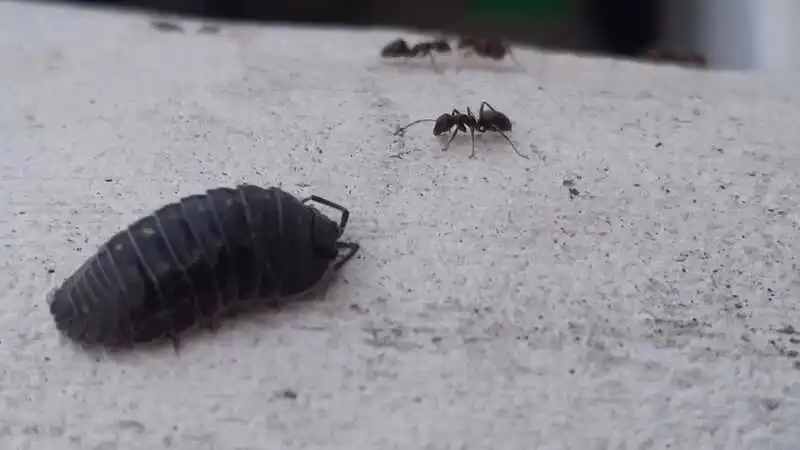Are you tired of seeing tiny critters crawling around your home? Woodlice are harmless but can be a nuisance, especially when they invade your living spaces. Learn how to get rid of woodlice in the home naturally using eco-friendly and effective methods to keep your home bug-free without harmful chemicals. Woodlice infestations are surprisingly common in damp homes, with 75% of cases occurring in basements, kitchens, and bathrooms. A recent survey found that 30% of homeowners experience woodlice sightings at least once a year, making it essential to tackle the problem with natural solutions.
In this guide, we’ll explore how to get rid of woodlice in the home naturally. We’ll break down the causes behind their infestations and offer simple, chemical-free remedies to eliminate them. If you’re looking for a safe and effective way to keep your home woodlice-free, this article provides everything you need to know.
1. Why Woodlice Are in Your Home: Causes Behind the Infestation
Woodlice, also known as pillbugs or slaters, are small crustaceans that thrive in damp environments. They typically enter homes searching for moisture and decaying organic matter to feed on. Before you can effectively get rid of woodlice naturally, it’s important to understand the factors attracting them to your home:
- Excess Moisture: Woodlice is drawn to damp, humid areas like bathrooms, kitchens, and basements.
- Organic Debris: They feed on decaying plant material, including dead leaves, rotting wood, and mulch.
- Gaps and Cracks: Small openings around windows, doors, and foundations serve as entry points for woodlice.
If your home provides these conditions, you may notice an increase in woodlice, particularly during wetter seasons.
How to Get Rid of Woodlice in the Home Naturally
There’s no need to use harsh chemicals to tackle a woodlice infestation. Below are natural, eco-friendly solutions you can use to get rid of woodlice:
a. Diatomaceous Earth
- How It Works: Diatomaceous earth is a naturally occurring powder that kills woodlice by dehydrating them when they come into contact with it.
- How to Use: Sprinkle the powder along doorways, windowsills, and any areas where you’ve seen woodlice. Ensure you use food-grade diatomaceous earth for safety.
b. Essential Oils
- How It Works: Essential oils like eucalyptus, lavender, and tea tree oil repel woodlice naturally with their strong scents.
- How to Use: Mix a few drops of essential oil with water in a spray bottle and apply it to areas where woodlice is most active, such as basements and under sinks.
c. White Vinegar Solution
- How It Works: The acidity in vinegar naturally repels woodlice by creating an environment they find unpleasant.
- How to Use: Combine equal parts white vinegar and water in a spray bottle. Spray the solution in damp areas, cracks, and corners where woodlice are likely to gather.
d. Baking Soda
- How It Works: Baking soda is a natural desiccant that dehydrates woodlice, similar to diatomaceous earth.
- How to Use: Sprinkle baking soda in corners, behind appliances, and near windows to discourage woodlice from settling in.
e. Homemade Traps
- How It Works: Woodlice are attracted to moisture, making damp traps highly effective for catching them.
- How to Use: Create simple traps using moist newspaper or damp cardboard boxes. Place them in affected areas overnight and dispose of the traps (and the captured woodlice) in the morning.
Preventing Future Infestations: Long-Term Solutions
Once you’ve successfully gotten rid of the woodlice, maintaining a dry and clean environment is essential for preventing their return. Here are some practical tips to ensure your home remains woodlice-free:
- Reduce Moisture: Use dehumidifiers in areas prone to dampness, such as basements and bathrooms.
- Fix Leaks: Check for and repair any leaking pipes, faucets, or drains that could be creating a moist environment.
- Seal Entry Points: Inspect your home for gaps and cracks in windows, doors, and walls, sealing them with caulk or weatherstripping to block woodlice from entering.
- Outdoor Maintenance: Regularly clear away leaves, mulch, and other decaying plant matter from around the foundation of your home. Trim plants and ensure proper drainage to minimize outdoor breeding grounds.
Conclusion
Now that you know how to get rid of woodlice in the home naturally, you can take proactive steps to eliminate these critters without resorting to harmful chemicals. By addressing moisture issues, sealing entry points, and using natural remedies like diatomaceous earth, essential oils, and vinegar, you can keep your home woodlice-free and ensure they don’t return.
Staying vigilant and maintaining a clean, dry home will ensure long-term control over woodlice infestations. Follow these natural solutions to enjoy a bug-free living space!


I don’t think the title of your article matches the content lol. Just kidding, mainly because I had some doubts after reading the article. https://www.binance.info/sl/register?ref=GQ1JXNRE